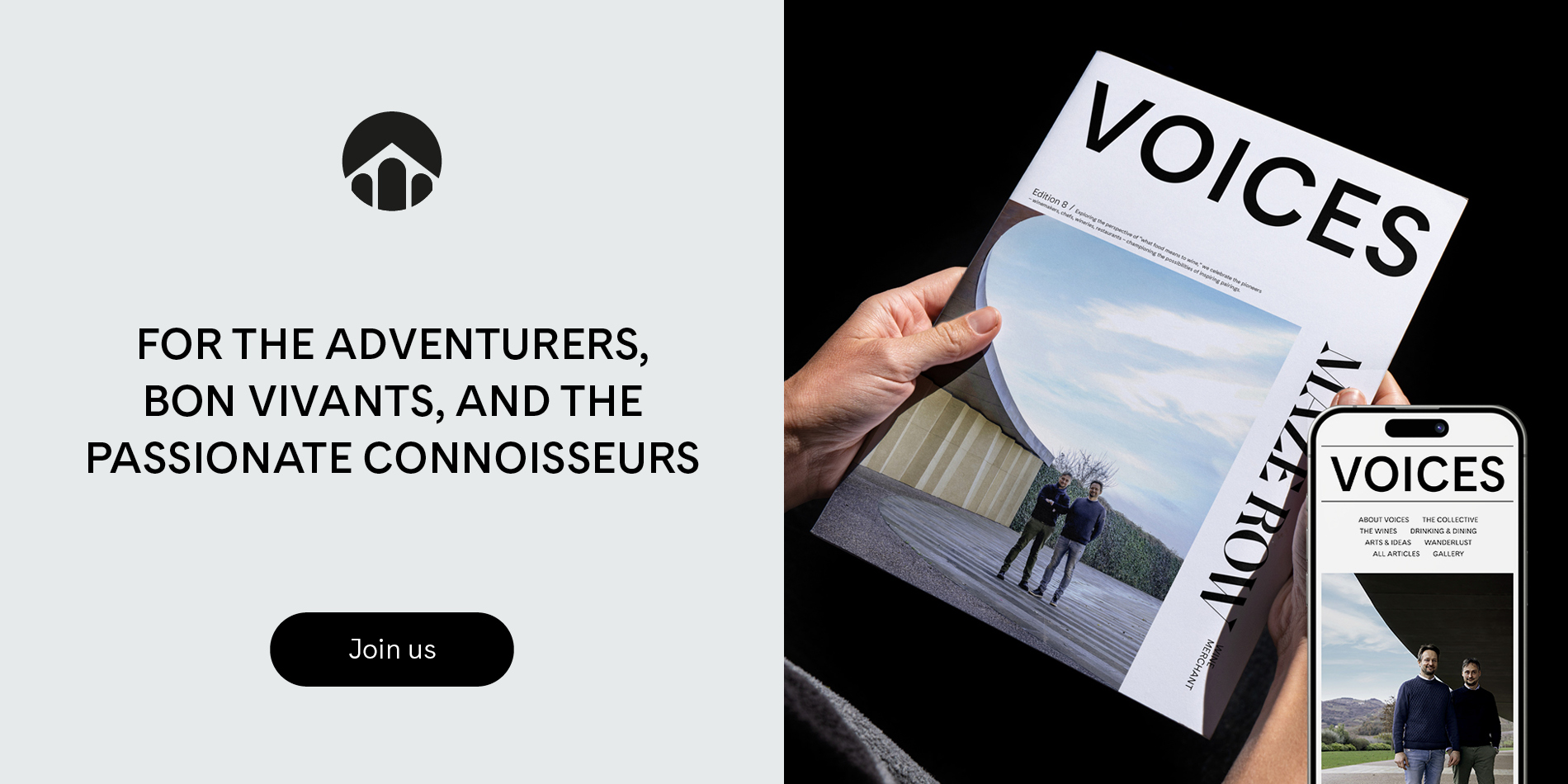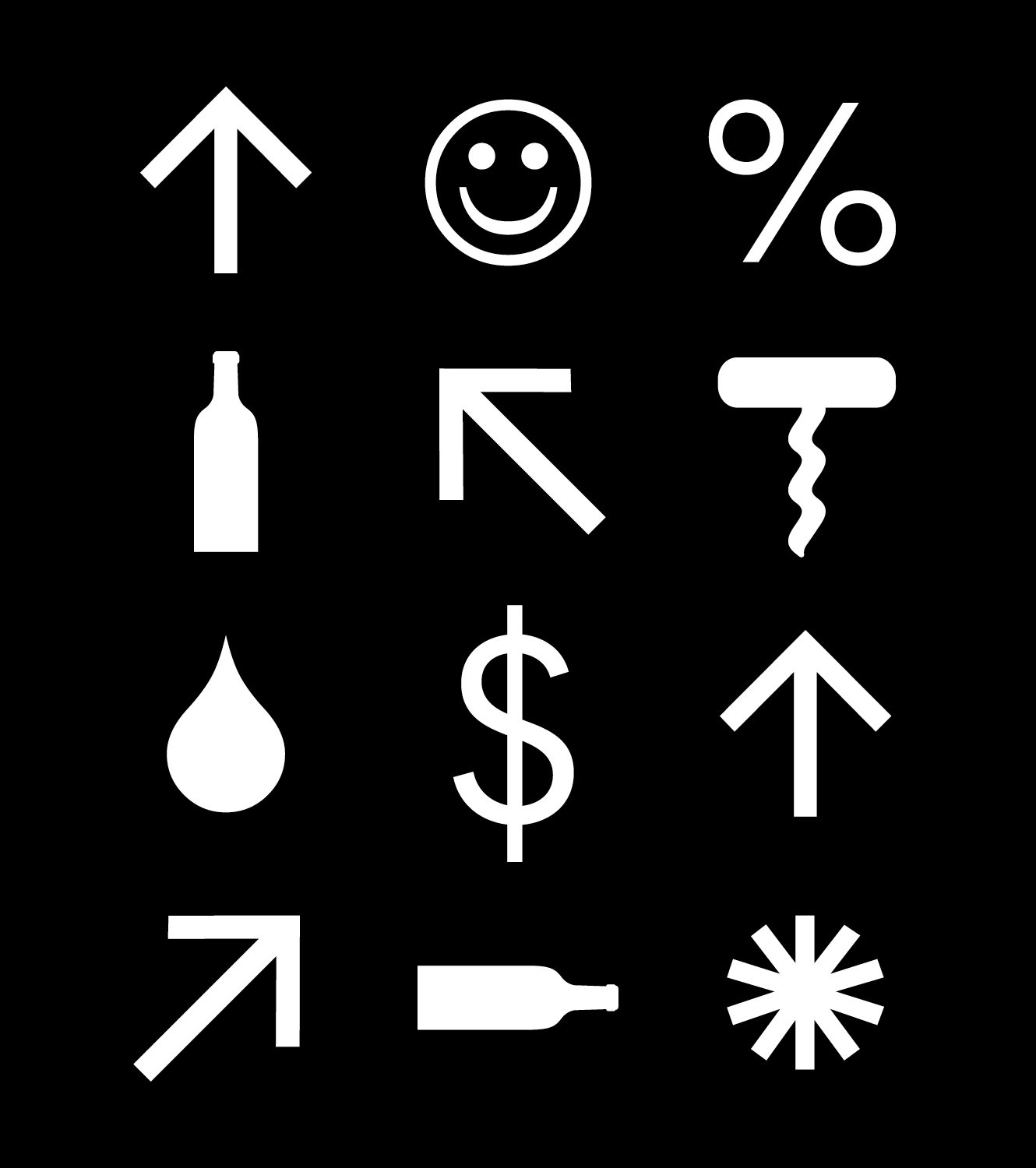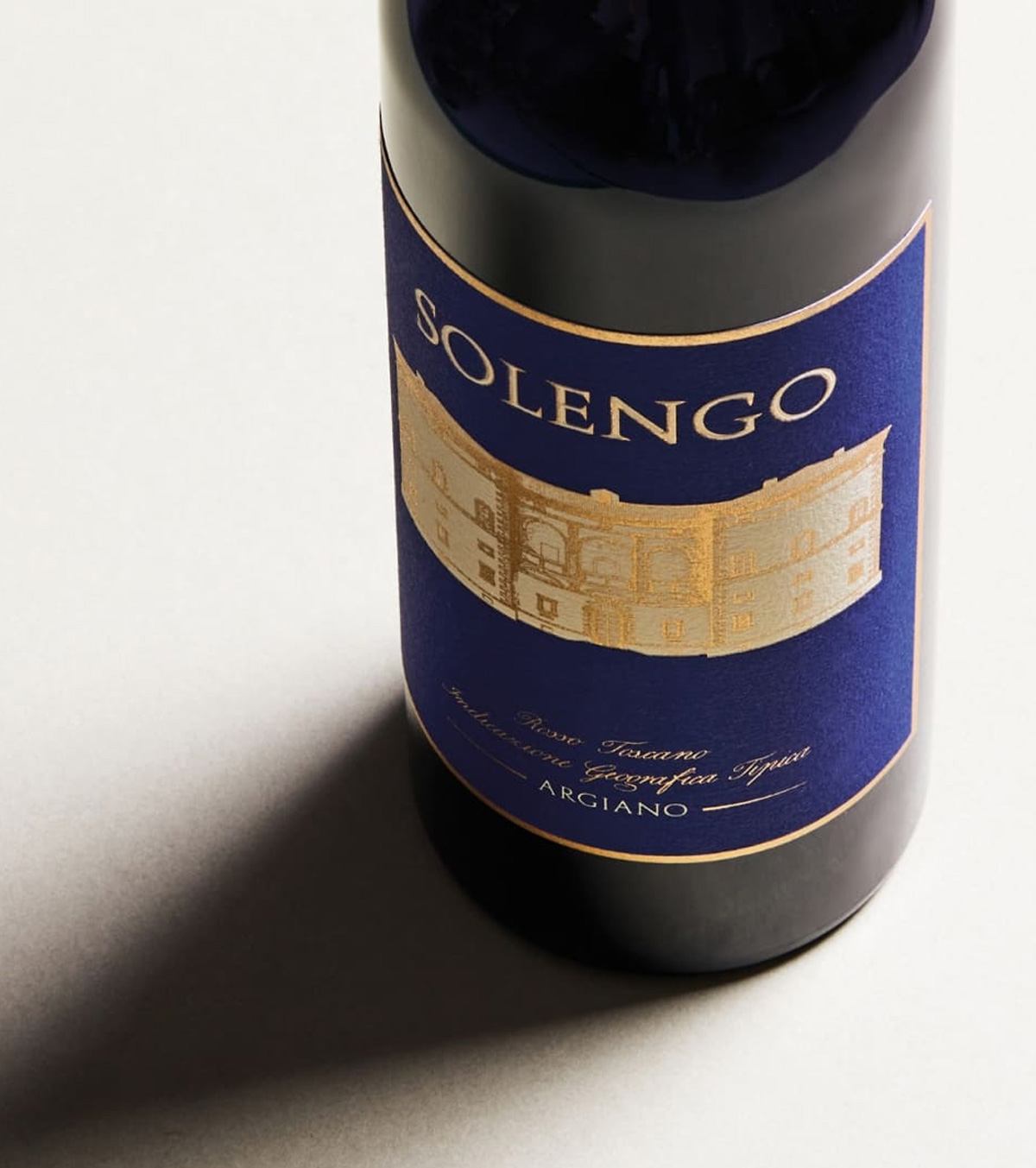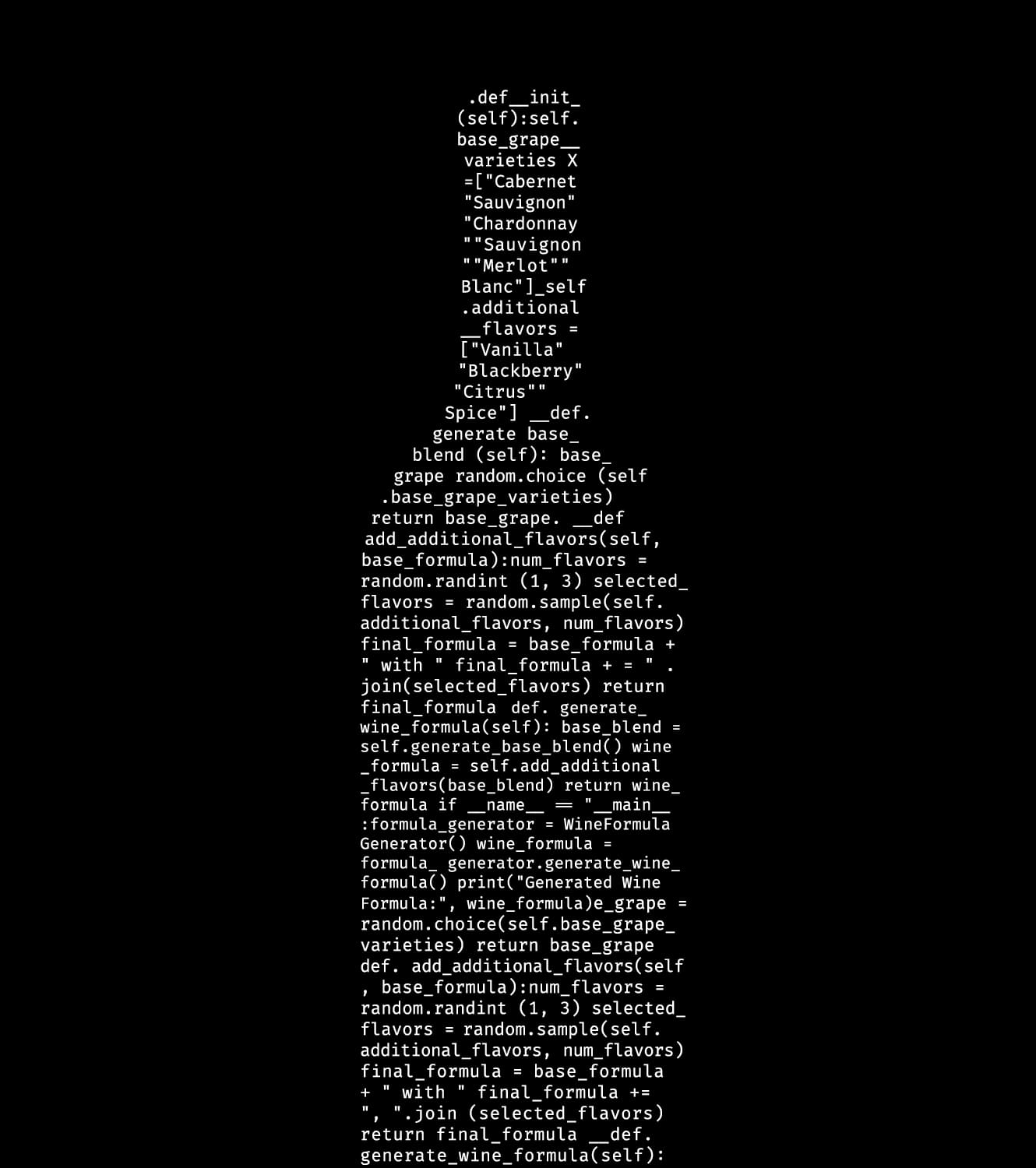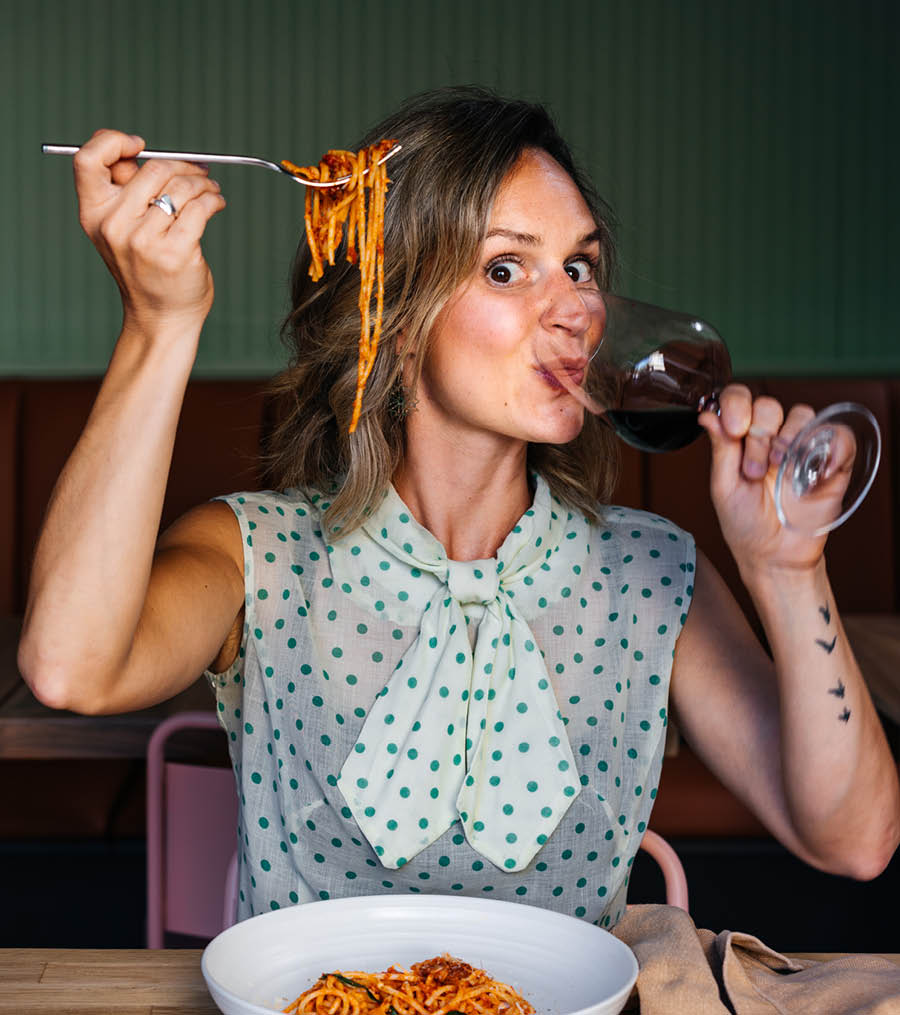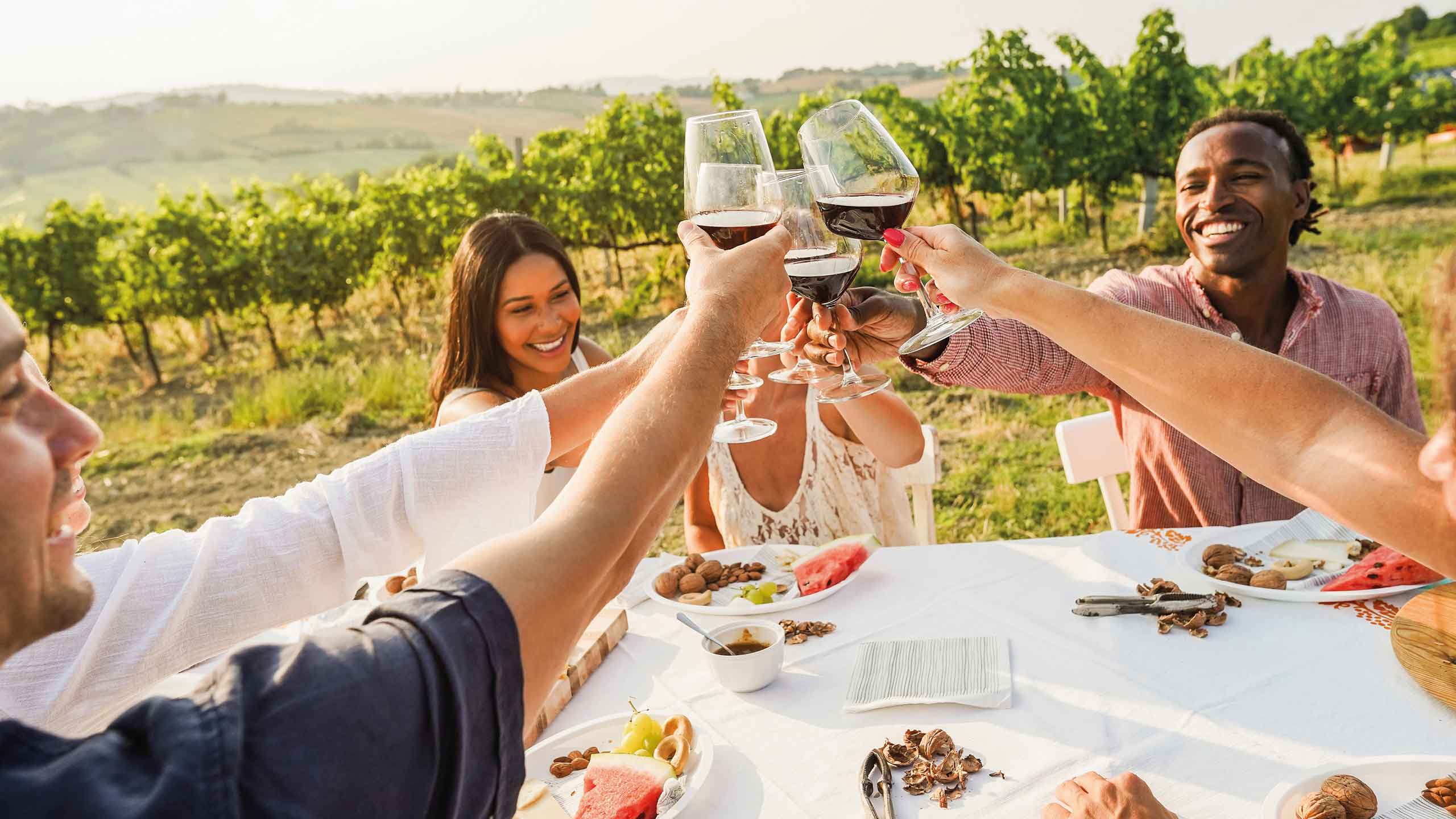
THE BIG PICTURE
Continuing our series on fine wine investment, Suzanne Denevan-Brown takes the long view, looking at how the changing habits of new generations of wine lovers, global influences, and a thirst for high-quality wines are reshaping the industry
Our series has so far explored investment in physical bottles of wine. For this edition, I wanted to explore a broader view of wine investing – investing in the sector through private or publicly traded companies. It felt timely, because there’s been a great deal of negative news coverage about consumption declines in alcohol, and wine specifically. We’ve heard how Gen-Z doesn’t find wine “cool,” and that multiple
generational cohorts are moderating their alcohol consumption.
We’ve seen vines being pulled out across California, France and Spain. The current sentiment about wine inside the business is as low as I’ve ever seen it in my 20-plus-year career. Given these headwinds, I thought it would be helpful to take a bigger picture, longer-term view on the idea of investing in wine. Is there value to be found in the category?
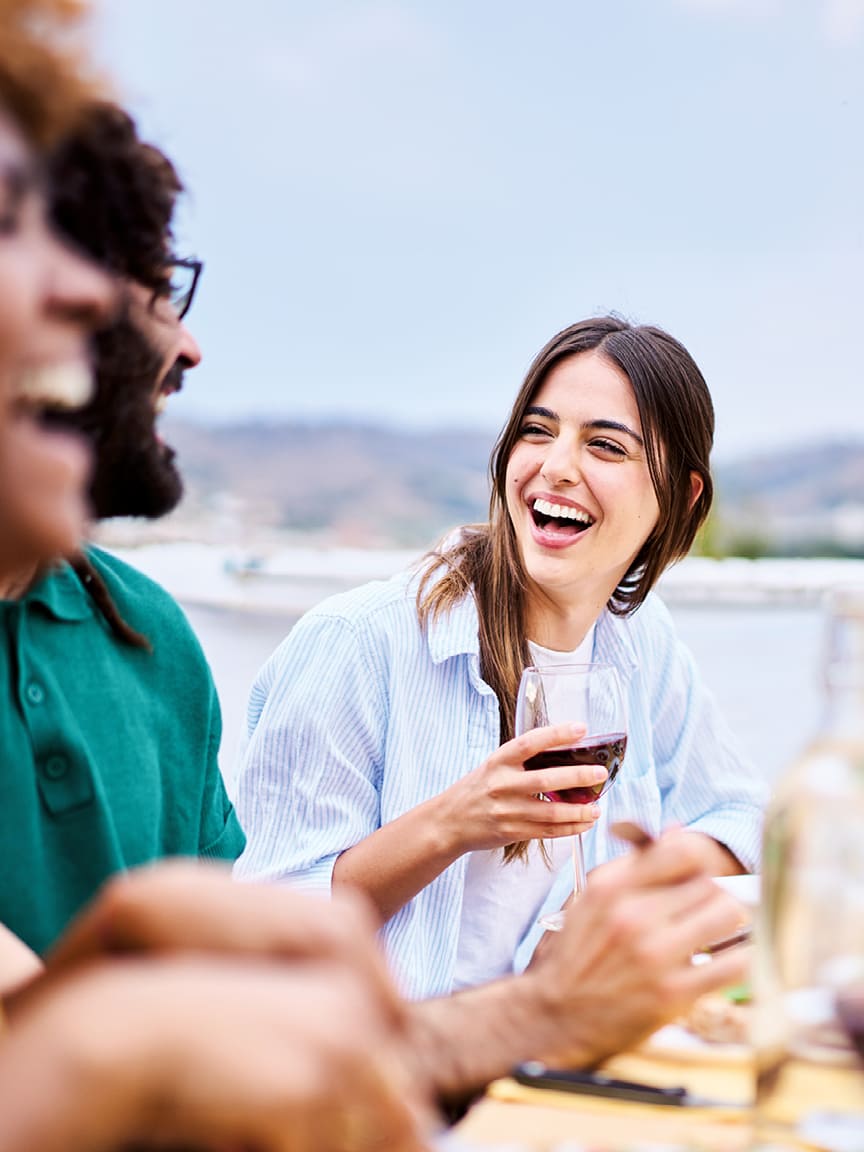
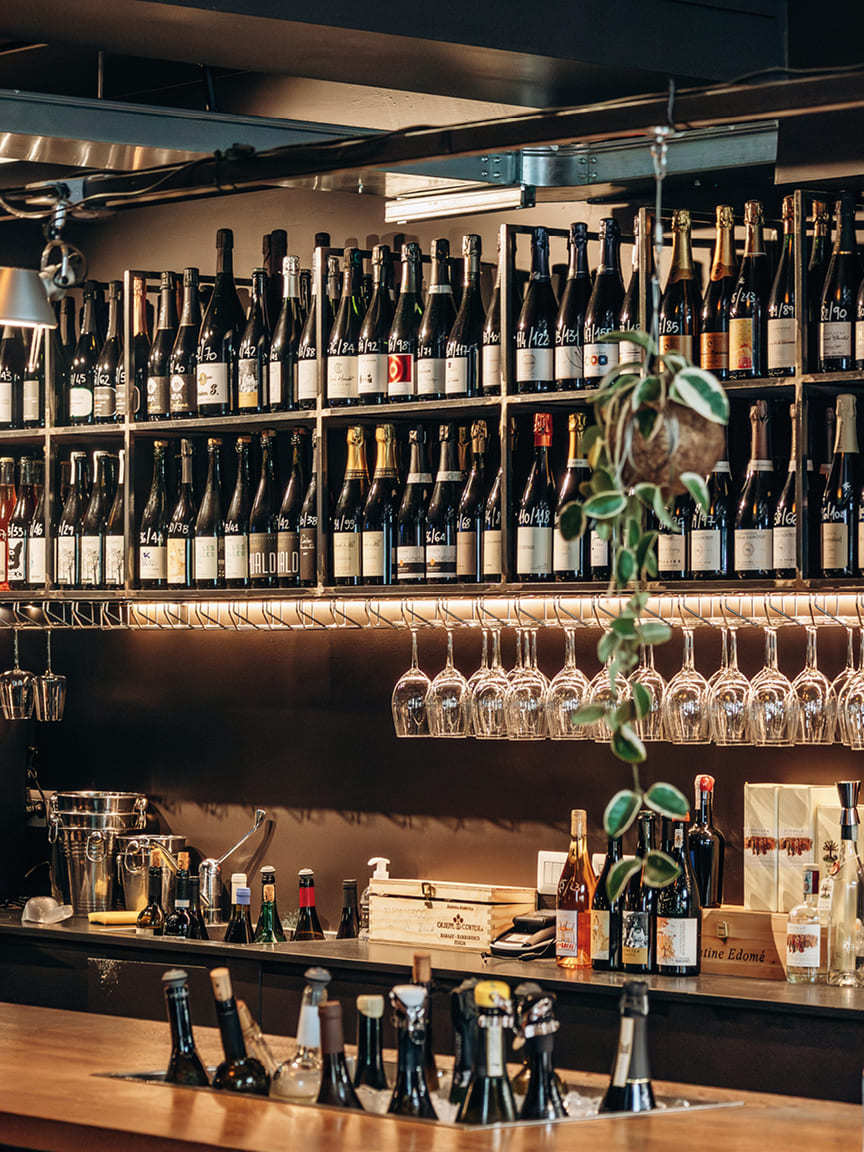
STATE OF CONSUMPTION
Although overall consumption volume is decreasing in the US, the percentage of “regular wine drinkers” among legal drinking age adults has stayed stable at near historic highs. As a result, the number of total wine drinkers has grown. Yes, you read that correctly. The number of wine drinkers has increased over the last five years. Those who imbibe wine at least once per month grew about 4 percent to 87 million consumers. In even brighter news, the population of weekly wine drinkers grew 5 percent to 64 million, or 1 point faster than US population growth (see IWSR’s Wine Landscapes – USA, 2024). Wine is definitely not “dead” in the US.
Over the last decade, we have also heard a lot about how Millennials are “killing” wine. In 2015, the reporting in the wine industry was rife with complaints, as Lettie Teague wrote in the Wall Street Journal. The usual storyline was that Millennials weren’t drinking enough, they were gullible because they were interested more in backstories than “terroir,” and they were dim, so wine communication would need to be simplified to emojis to reach this generation.
Today, this coveted cohort has emerged as wine’s most involved consumer demographic. Millennials were not being “stupid” when they interrogated the wine category to find authentic stories of growers and makers, nor elementary when using social media to share what they were drinking. Millennials (alongside ubiquitous information and pocket tech) have reshaped wine. And although Gen-Z is starting out in wine at lower levels than previous newly legal drinking age cohorts, their involvement in the category is on par with that of Gen-X. In terms of the three categories of involvement (Low, Medium, and High) the Gen-Z and Gen-X are at parity with 85 percent of wine drinkers in the top two boxes, according to IWSR’s Wine Landscapes – USA, 2024.
FROM VOLUME TO VALUE
Globally, consumption is declining in lower- priced wine segments, but gaining in the more “premium” price segments. This is especially true in the US.
Growth historically and in the future is forecasted to come from wines priced at the “super premium,” and higher tiers. These wines are priced $25+. There’s a common saying in the industry that our patrons are drinking less but drinking better. Some of the reduction in wine occasions is certainly the result of the trend toward moderation. Another factor is substitution – as consumers switch out of lower-priced wine and into ready-to-drink (RTDs) or other beverage alcohol categories.
While total servings of wine are declining, there’s still good news for the long-term for $25+ priced “fine” wines. There is strength in spending in the younger cohorts. Around 30 percent of the most engaged consumers are either Millennials or Gen-X, however they account for 60 percent of the value of the wine market. The consumers who are leaving are price sensitive, older customers. Is wine shrinking? Yes, but mostly out of older customers, not newer ones.
GOING BLANC
What are these engaged Millennials and Gen-Xers choosing when they choose to drink better? First, they’re drinking more sparkling and white wines. Red wine is having a tough time right now. Alarm bells rang across the industry when in December 2024 the San Francisco Chronicle reported data from Toast, a restaurant point-of-sale system provider, showing a Q2 decline of 12 percent in sales of red wine in the Bay Area.
This downward trend is attributed to an increased interest in moderation. As the consumer balances their choices to optimize their health, for example by reducing their red meat consumption, they have also reduced an occasion for red wine pairing, as noted Sarah Brown in Wine Business Monthly in July 2024.
New cuisine preferences also contribute to lower consumption of red wines. Millennials were the first generation to dislodge Italian cuisine from their top spot – it fell to #2 behind Mexican food. Gen-Z also holds Mexican food as #1. For them, Chinese is #2 and Italian is #3, according to Dora Mekouar (“Young America’s Favorite New Ethnic Food,” VOA, June 14, 2023). While Mexican and Chinese restaurants in the US don’t exhibit a wine culture, most sparkling and white wines can enhance these meals. The moderation trend, paired with diversifying flavor palates which favor white wines for pairing, will continue to provide a growth curve for sparkling and white wines.
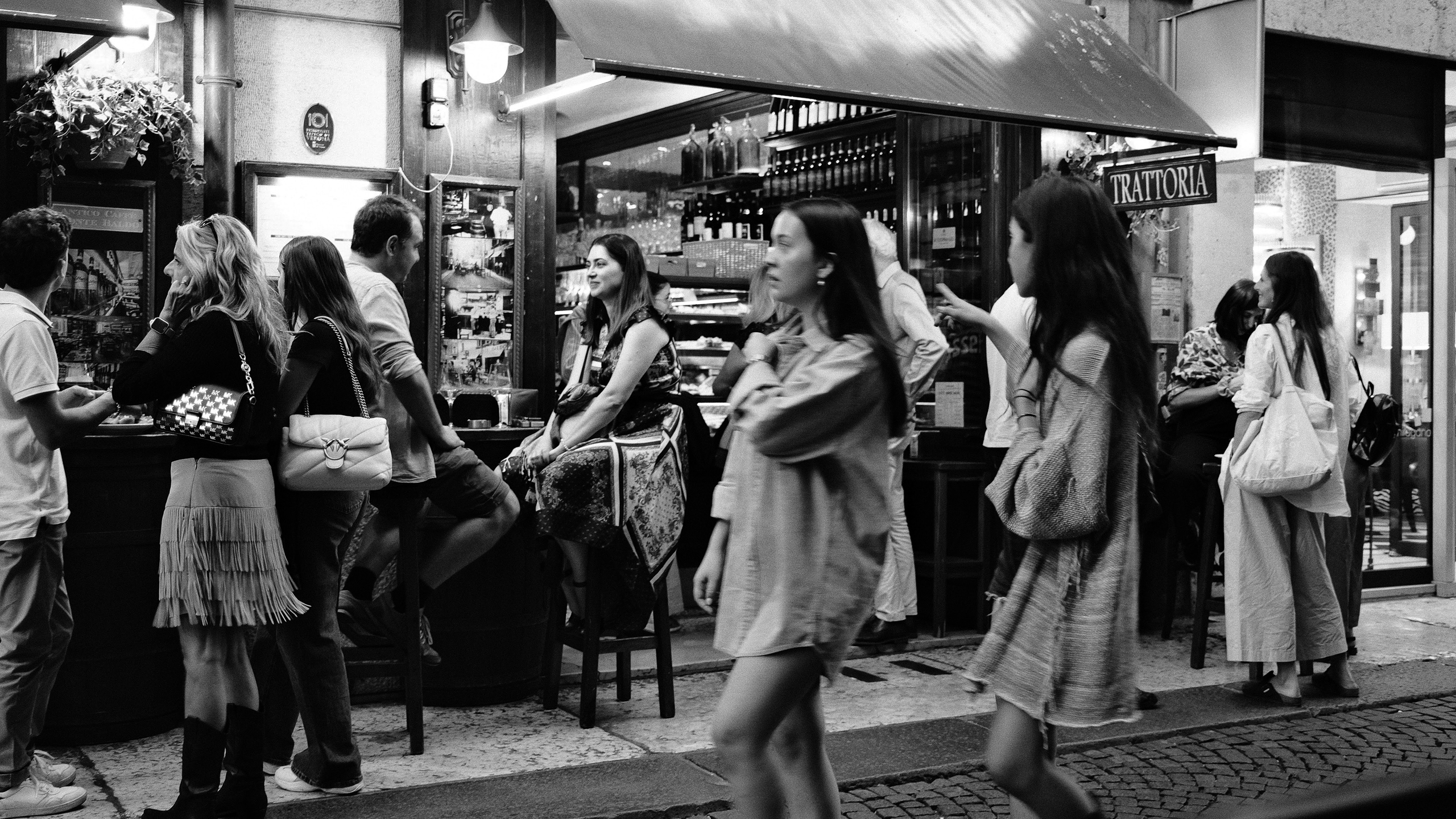
THE NEW LUXURY
As discussed earlier, the reshaping of the wine business through the Millennial lens of “authentic,” growers and makers has been fully realized. Today, every member of the wine trade understands that it isn’t enough to produce a high-quality, great tasting glass of wine. It’s a requirement to be able to communicate how that wine represents a unique authorial point of view, and that it was grown sustainably. And for fine wine, that’s a good thing. Over the next ten years, “luxury” wine marketing will continue its reshaping by both Millennial and Gen-Z consumers.
EXPERIENCE MATTERS
Global food and beverage intelligence company Datassential, in their 2025 Trends report, asked consumers to identify a list of ingredients as “luxury.” The result was that 42 percent of social media native Gen-Zers ranked edible gold as “luxury” compared to only 31 percent of Millennials. The 10th ranked luxury ingredient was the category of “Natural/Organic/Local.” These data points illustrate a big opportunity for wine marketers. Edible gold wins the Gen-Z cohort because it wins visually on social media. Communicating that wine is a “natural” beverage is readily achieved in the same format.
Datassential followed that question with another asking consumers to rank which factors of dining at restaurants are the most “luxurious.” The number one factor, selected by 55 percent of consumers was: “Dining at a sit-down restaurant in general (being served/waited on, not having to clean up or cook, etc.).
Interestingly, restaurant operators in the same survey significantly under-estimated the value diners placed on the experience of dining out. Increasing their awareness of this consumer need, and according to Datassential, joining forces with wine marketers to fulfill consumer desire for “little luxuries,” will drive wine growth over the long-term.
GLOBAL TASTES
Like wine, coffee has a global culture. About
57 percent of consumers are interested in global coffee and café cultures including third spaces, where slowing down and having a sit-down coffee is the norm, while 78 percent of consumers think that Americans, in general, could benefit from slowing down and enjoying life (versus a more bustling lifestyle). These preferences for cultural experiences that are considered non-American are likely to accelerate with the growing number (55 percent) of 18-27 year old Gen-Zers who travel outside the US and report that travel has changed their taste preferences (67 percent), notes Datassential.
If we accept coffee as a directional proxy for wine, there are good reasons to believe that wine will ride this wave of growth in the US. Wine is a vibrant part of many non-American cultures, and wine offers a highly accessible vehicle to explore those cultures. Further, the slow down sentiment is readily mapped to the key wine occasions in “on-premises”: Relaxing, Socializing, or a Casual Meal.
The growth we see today in on-premises is driven by Gen-Z and Millennials (IWSR Bevtrac 2024, Consumer Insights Wave 2 – US, Nov 28, 2024) whose wine consumption frequency stayed flat or grew in 2023 vs 2022, on a base that was higher than 2019, or pre-Covid (IWSR’s Wine Landscapes – USA, 2024).
Savvy operators will lean into this consumer desire to experience the luxury of time. Retailers and wine marketers will communicate the cultural values of wine.
SUMMING IT UP
The wine category is being reshaped, and it will result in lower consumption volume overall. However, the preferences of Millennials and Gen-Z for wines made with vision and social responsibility, paired with the trends for indulgence and cultural exploration, also set the stage for growth in the value of Super Premium+ priced wine. The opportunity for growth will be realized when wine communications go beyond ingredients and origin into showing how wine enhances life for its consumers.
Suzanne Denevan-Brown is the marketing director at Maze Row.
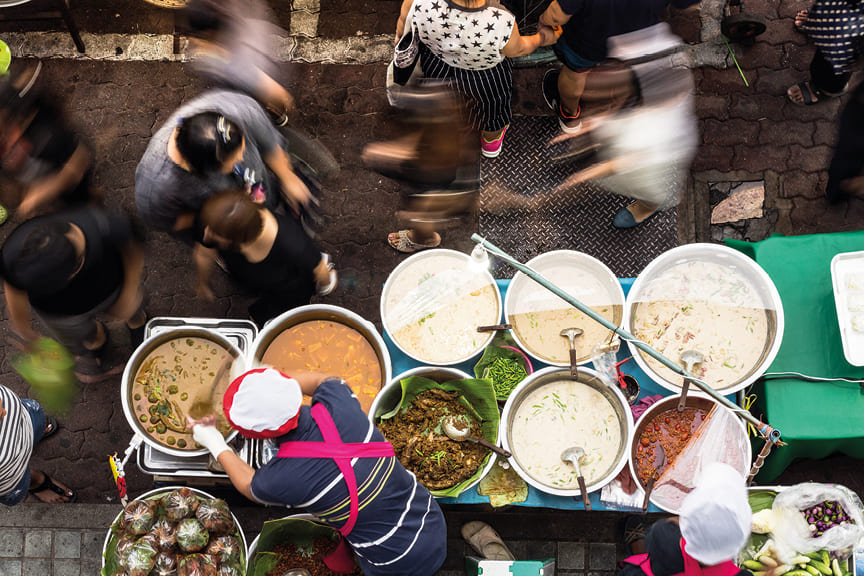
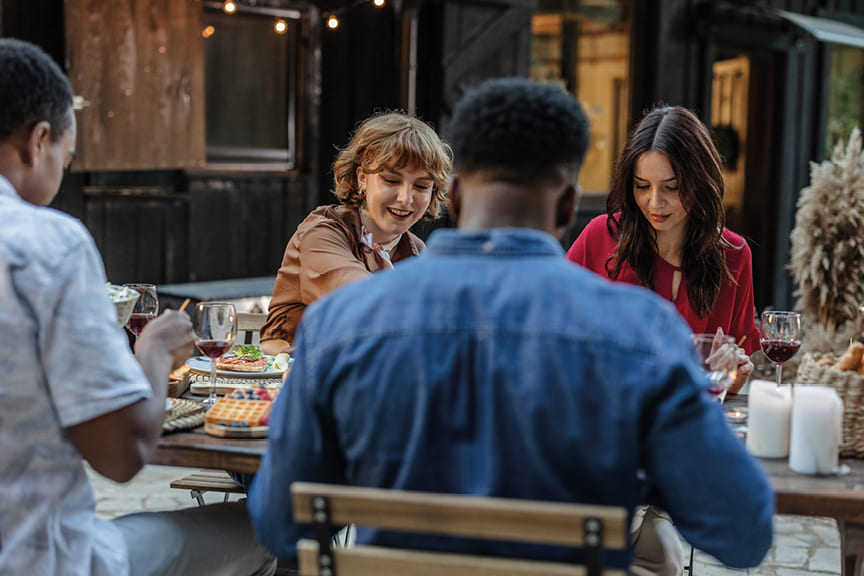
“Today, every member of the wine trade understands that it isn’t enough to produce a high-quality, great tasting glass of wine. It’s a requirement to be able to communicate how that wine represents a unique authorial point of view and that it was grown sustainably”
Photography ©Spinach Branding for Maze Row. ©Kitzcorner, Andrei Antipov, Tint Media, Johnathan Ball, Anansing, Popova Tetiana, PintoArt for Shutterstock
We recommend
UNCORKED POTENTIAL
Suzanne Denevan-Brown continues to guide us through the ins and outs of investing in fine wine, gathering the best advice from experts in the field
LIQUID ASSETS
Chosen with care like art, fine wine can be a great investment. But what are the best ways to get started? Suzanne Denevan-Brown kick-starts our new series
IT’S AI TIME
From precision viticulture to optimized communications, artificial intelligence is set to revolutionize the winemaking world, writes Richard Hough
AGENTS OF CHANGE
Jordan Mackay speaks with Stevie Stacionis about Bâtonnage, the multifaceted organization the wine shop owner co-founded with writer and educator Sarah Bray in Napa in 2018 to support women in wine
